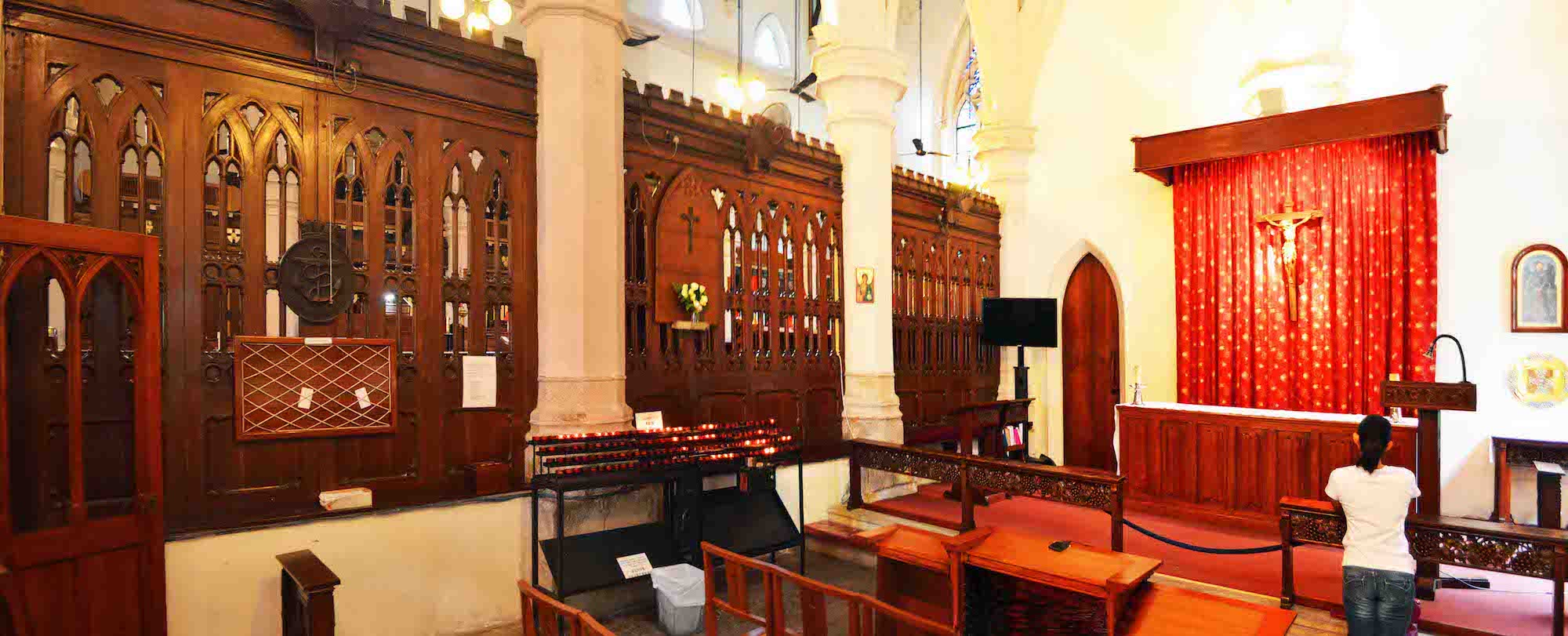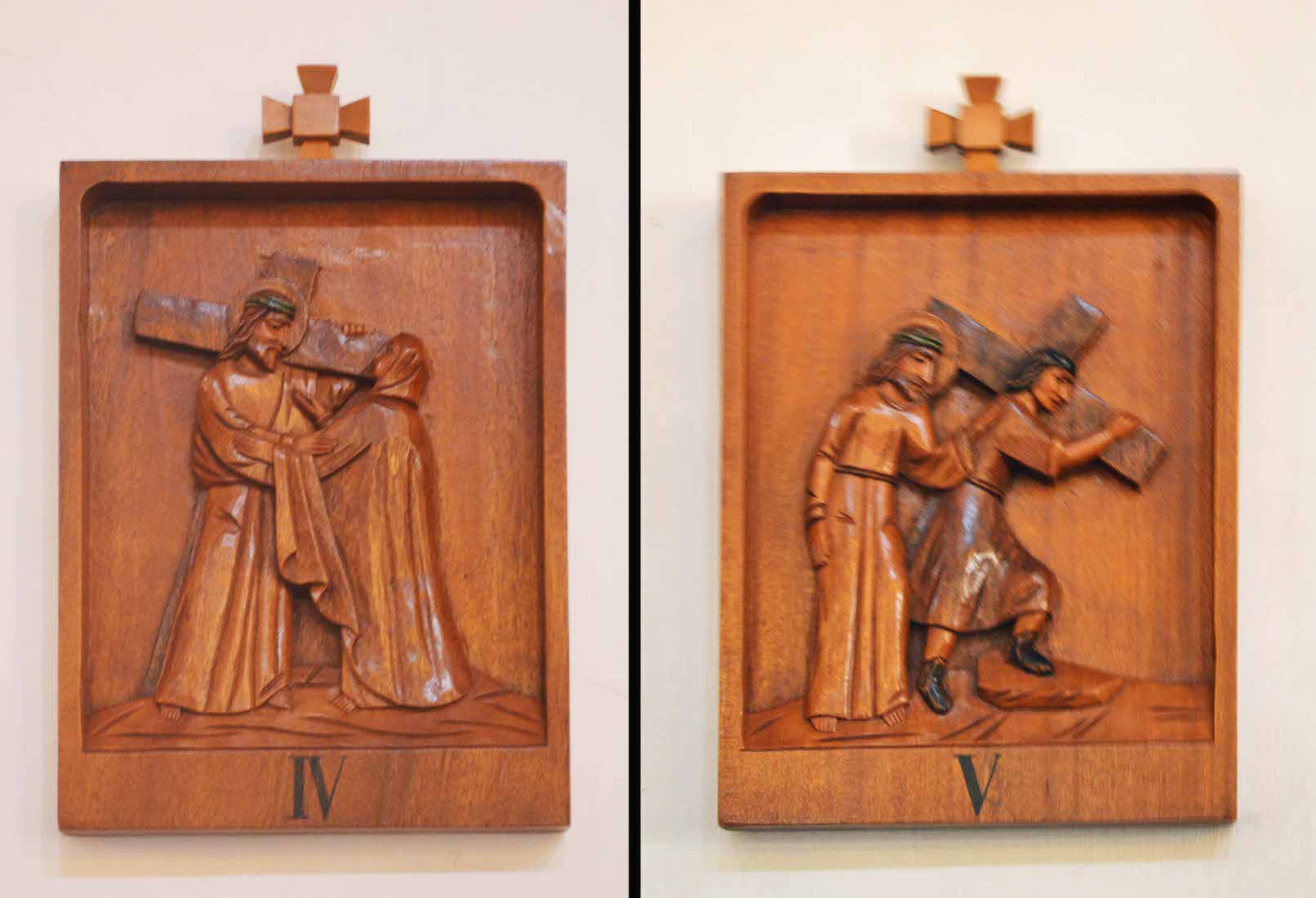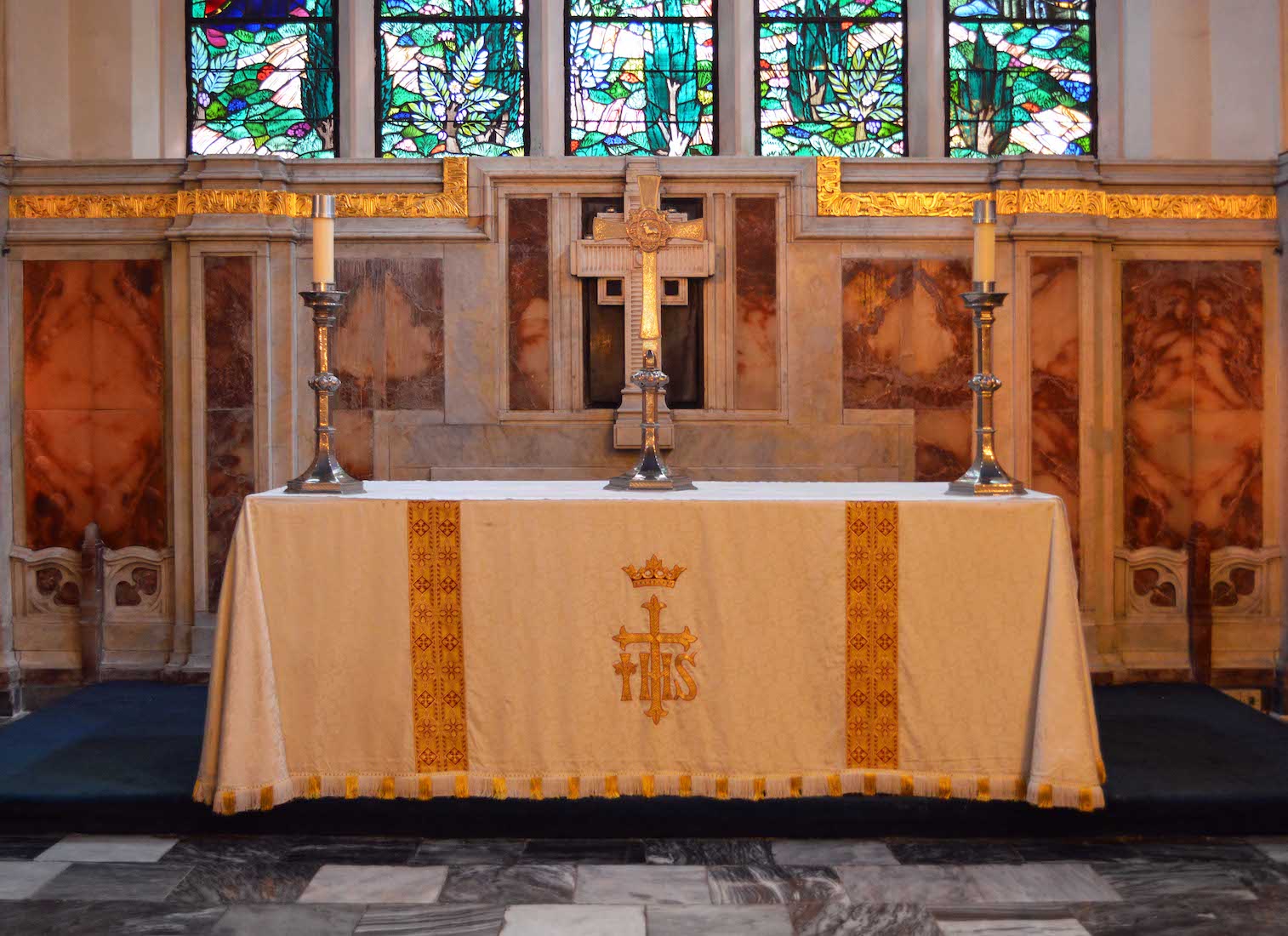
This is a view of the North and East walls of the Chapel of St Michael and All Angels. The Chapel was established in 1955 as a memorial to those who defended Hong Kong in 1941 against the Japanese occupation. It was moved to its present location in 1968. PLAN
42. PLAQUE AND REREDOS

The HMS Cornflower plaque was presented by the Navy in 1967. The simple altar piece at right came from the chapel of the Shamshuipo internment camp during the Japanese occupation of Hong Kong in WWII. The prayer of Richard of Chichester is inscribed. Fresh flowers in a jam jar were the only available decoration at the time, and this practice is continued today.
43. ALTAR
Simplicity is the theme here: a crucifix, a red hanging, and an unadorned altar ..
44. PICTURE, AUMBRY, THRONE
The picture of St Michael was given in memory of Michael Temple, son of the then Dean in 1956. The aumbry houses the reserved elements of the Eucharist. The sanctuary lamp above marks the aumbry. Notice the hand rests and crest on the ancient throne – a past cathedra?
45. TABLETS AND BOOKS OF REMEMBRANCE
From left to right, the tablets remember members of the Middlesex Regiment who died defending Hong Kong; members of the Merchant Navy and Shipping Fleets; and the names of those whose memorial tablets were destroyed during the enemy occupation in 1941–1945.
46. REGIMENTAL COLOURS
The colours hanging above are of: The Royal Hong Kong Police Force; Hong Kong Volunteer Defence Force; HKVDC replacement Colours, laid up in 1971; the White Ensign; the 28 (AC) Squadron Royal Air Force at Sek Kong; the Hong Kong Auxiliary Air Force; the Flag of Hong Kong.
48. STATIONS OF THE CROSS
Two more of the Stations of the Cross. Simon the Cyrenian who carried Jesus’ cross, might well be Chinese!
49. SOUTH WEST NAVE
In this corner of the nave there is a plaque and an icon. The high humidity in Hong Kong must create headaches over Cathedral maintenance.
50. PLAQUE AND ICON
The plaque is in memory of Governor Sir Edward Youde. The icon of the Blessed Virgin Mary is traditionally called the ‘Odigitria’ – She who points to the Way. It is a depiction of Mary as the God-bearer. In the icon she is holding the Child Jesus at her side while pointing to him as the source of salvation for all people.
51. ARCHBISHOPS AND CHAPLAINS
Moving around towards the West door we come to these two boards listing the Archbishops (since 1998), the Colonial Chaplains, the Cathedral Chaplains, and several Deans.
53. COATS OF ARMS
All around the chancel we find further crests or coats of arms of the various British Dioceses.
54. PROCESSIONAL CROSS
Standing behind the central altar is the Processional Cross, used to usher in choir and clergy. The Cross has the Lamb with Flag at centre, representing Christ, and symbols of the Four Evangeslists at the ends.
55. CHOIR STALLS
The chancel is the music centre of the Cathedral. Here we find the organ (the console is at left), and some of the choir stalls with their distinctive lamps.
57. SPECIAL CHIAR
This ornate chair with its dragon head arms is part of the old Bishop’s Throne.
58. SCULPTED FIGURES
Two attractive sculpted figures, but there is no indication as to who they are. In all likelihood, Mary and Jesus ...
59. THE HIGH ALTAR
Before the liturgical reforms of the 1960s, this is where the main services of holy communiuon were celebrated. Now it is used only on special occasions.
60. ALTAR CROSS
The beautiful altar cross features the Lamb with Flag symbol representing Christ. Christ is often referred to as the Lamb of God. If we think of the flag rather as a banner, then there is a picture of Christ, risen and victorious.


















